The G major scale has 7 notes, which means that there are 7 chords in the key of G. Each chord roots on a note of the scale.
Popular chord progressions in the key of G
The key of G is a very popular key, since it only has one accidental, the F#. For this reason, you'll use it very often for everything from blues to pop. Here are some popular chord progressions in G which you can start playing right away.
| Progression | Chords |
|---|---|
| I-IV-V | G-C-D |
| I-IV-I-V | G-C-G-D |
| I-V-vi-IV | G-D-Em-C |
| I-ii-IV-V | G-Am-C-D |
| I-vi-ii-V | G-Em-Am-D |
| I-vi-IV-V | G-Em-C-D |
When the G is not the 1st chord
One of the easiest ways to identify whether a song is in G major is by listening for specific chord progressions that resolve to G.
These cadences create strong resolution points that define the key center, and resolve to the G major.
| Progression | Chords | Notes |
|---|---|---|
| IV-V-I | C-D-G | This classic progression moves from C to D before resolving to G. It creates a powerful sense of "coming home" to G major and is one of the strongest indicators you're hearing music in this key. |
| ii-V-I | Am-D-G | This progression moves from Am to D before resolving to G. It's extremely common in jazz, pop, and rock music, creating smooth bass movement (A-D-G). |
Why are these the chords in the key of G major? (the theory)
The chords in G will root on the notes along the G major scale, since all chords in a major key are formed by notes from their respective diatonic scale. (Make sure you know the major scale on guitar before continuing.)
The G major scale has 7 notes, each with a corresponding scale degree:
Degree: 1 2 3 4 5 6 7 1(octave)
Note: G A B C D E F# G
But how do we know which chord will be major or minor? Starting from a given root note, we need to form its triad in a way which leaves the chord constructed only from notes that can be found on the G major scale.
This means that starting from each root note, we’ll count out the 1st 3rd and 5th degrees along the major scale of that given root note. We than compare these notes with the notes of the G major scale, and if any single note is not in our key, we’ll have to flatten it to make it a note that can be found on the G major scale.
Again, the key of G is nice and easy to work with by the way, since it only has 1 accidental, the F#.
We’ll be using 3 triads:
- Major triad (major chords) with scale degrees 1 3 5
- Minor triad (minor chords) with scale degrees 1 b3 5
- Diminished triads (diminished chords) with scale degrees 1 b3 b5
Now let’s calculate the quality of each chord in the key of G.
G major
Note: G A B C D E F# G
Triad: 1 3 5
This gives us the notes G, B and D, which is the G major triad, therefore the first chord in the key of G is G major.A minor
Note: A B C# D E F# G# A
Triad: 1 3 5
So our 3rd note for would be a C#, but we can’t have that, since that note is not in the key of G major (not on the G major scale). We have to lower the 3rd to the flattened 3rd.
Note: A B C D E F# G# A
Triad: 1 b3 5
This gives us the notes A, C and E, which is the A minor triad. All of these notes are on the G major scale as well, therefore the second chord in the key of G is A minor.B minor
Note: B C# D# E F# G# A# B
Triad: 1 3 5
So our 3rd note would be a D#, but we can’t have that, since that note is not in the key of G. We have to lower the 3rd to the flattened 3rd.
Note: B C# D E F# G# A# B
Triad: 1 b3 5
This gives us the notes B, D and F#, which is the B minor triad, therefore the third chord in the key of G is B minor.C major
Note: C D E F G A B C
Triad: 1 3 5
This time we’re in luck, the 1st, 3rd and 5th of the C major scale are in the key of G, so we don’t need to modify any of the notes. We get the notes C, E and G, which is the C major triad, therefore the fourth chord in the key of G is C major.D major
Note: D E F# G A B C# D
Triad: 1 3 5
Again, the 1st, 3rd and 5th of the D major scale are in the key of G, so we don’t need to modify any of the notes. We get the notes D F# and A, which is the D major triad, therefore the fifth chord in the key of G is D major.E minor
Note: E F# G# A B C# D# E
Triad: 1 3 5
Again, we need to modify our 3rd note, which would be a G#, since that note is not in the key of G. We have to lower the 3rd to the flattened 3rd.
Note: E F# G A B C# D# E
Triad: 1 b3 5
This gives us the notes E, G and B, which is the E minor triad, therefore the sixth chord in the key of G is E minor.F# diminished
Note: F# G# A# B C# D# E#
Triad: 1 3 5
Ohoh, now we need to flatten the 3rd AND the 5th, since neither the A# or the C# are on the G major scale.
Note: F# G# A B C D# E#
Triad: 1 b3 b5
This gives us the notes F#, A and C, which is the F# diminished triad, therefore the seventh chord in the key of G is F# diminished.
And that's about it, you should now know the intricacies of chords in the key of G. Have a look at guitar chords in other keys as well.

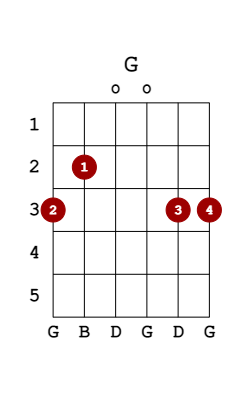
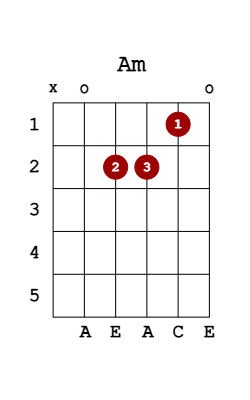
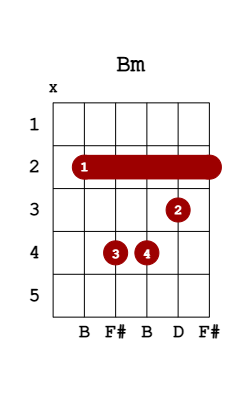
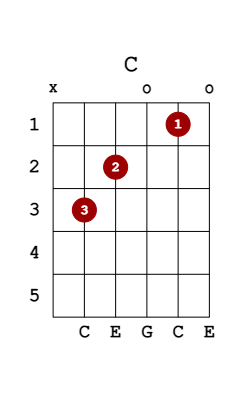
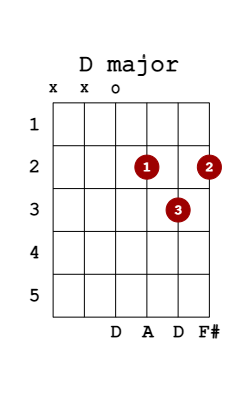

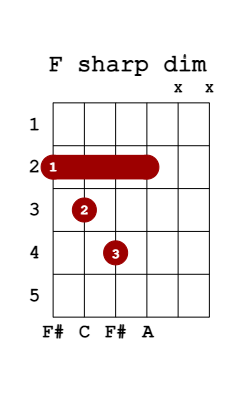




How is there such a thing as an e sharp?
When you talk about scales, you use sharps and flats to move through scale intervals. So even though E# doesn’t exist, and is, in fact, F, you would denote it E# in the context of the F# diminished scale. It’s weird I know, but that’s how it is.
In the context of that F# scale, it already starts with an F (the F#) and since there needs to be seven different note letters in a scale, the seventh needs to be called E#… It’s all about context
Should the F# diminished contain the flat 7 (F#m7b5), since E# is not in the key of G?
Thanks
No, we don’t need to add a 7th degree to the chord. I think you’re mixing this up because it is the 7th chord in the scale of G major, but we don’t need the extra note in it.
OMG, so clearly explained. Thank you very much.
if elected we will cancel the dim chord. I hate diminished chords. There is a fundamental breakdown in theory to conceive of diminished chords. I don’t really play the piano, but I submit that diminished chords are a creature of the 88 keys. Remember if you just randomly bang on white keys you can claim you have authored a really cool jazz piece in A minor. Just do it with a lot of attitude and you’ll gain the respect of the unknowing who will hail you as another prodigy bursting upon the scene.
Brilliant.thank you.
Well thank you, this is the first time that I am able to understand and remember this important element of music/guitar theory. Cheers from Ottawa, Canada.
Hi Tom
Great lesson easy to understand.
Thankyou
How does one notate the G/A chord in Roman numerals?
You can’t use a Roman numeral for the /A part. Just G would be I.
I finally get it!! Thank you very much for this wonderful lesson—so clearly presented and it was so helpful to be walked through each triad, especially the vii!